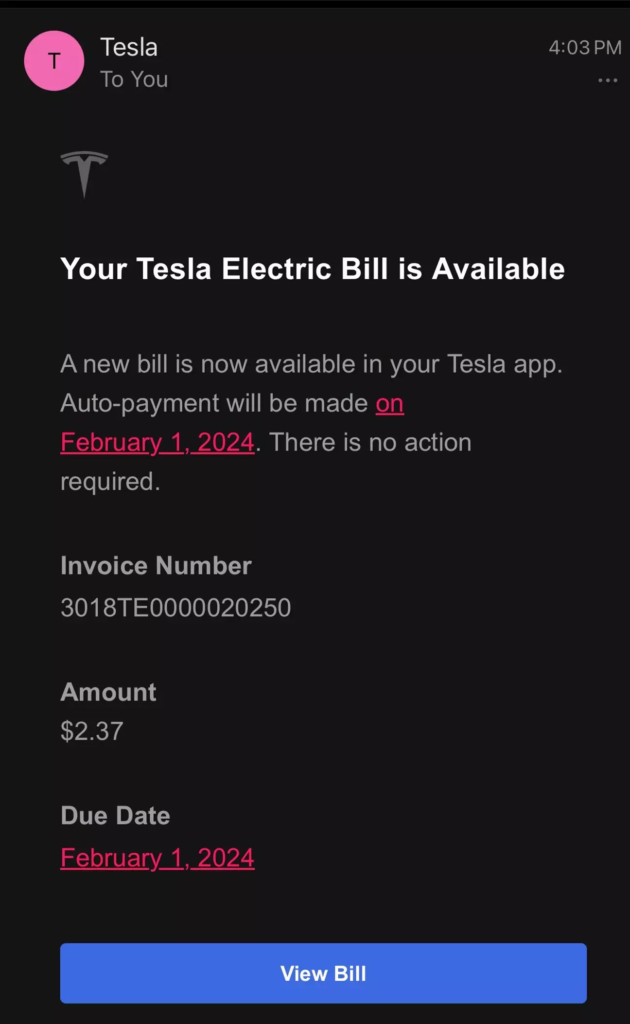Electric vehicles are being hailed as the cars of tomorrow, prompting inquiries into their potential impact on energy expenses. Recently, a Tesla driver disclosed their initial electric statement, sparking a deeper conversation on the utilization of Tesla’s Powerwall for residential energy requirements.
The Tesla proprietor utilized X, previously referred to as Twitter, to reveal the electricity expenses of operating their Tesla for a full year. Contrary to anticipations of exorbitant costs, the individual’s electric bill for the entire year amounted to a mere $2.37 (£1.89). This revelation astonished many, leading to discussions challenging preconceived notions about the possible high electricity expenses associated with electric cars.
 Image Credit: Credit: X/@Tesla_GTownTX
Image Credit: Credit: X/@Tesla_GTownTX
But closer inspection revealed that the Tesla owner had a Tesla Powerwall connected to solar panels. The panels not only power the house but also store excess energy for charging the Tesla. The post sparked humorous responses from the online community, with some suggesting a GoFundMe campaign to support the “struggling” Tesla owner.
The Marvel of Tesla’s Powerwall
The heart of this discussion is Tesla’s Powerwall—a fancy solar battery system that’s built to store energy from your home solar panels or roof.1 This Powerwall is packing a lithium-ion battery, and it can hold 13.5kWh of energy with a 100% depth of discharge, ensuring you get the most out of the stored energy. Plus, it’s not just a backup during power outages; it can even help you go off the grid.
Getting yourself a single Powerwall will set you back $11,500, and prices can vary depending on your location. But here’s the cool part—there are discounts if you’re considering going big and getting multiple units, making it attractive for those looking for an all-in-one home energy solution. And don’t worry, we’ll break down all the costs, including installation and pricing for different quantities.
Feel free to SHARE this article with your loved ones!
